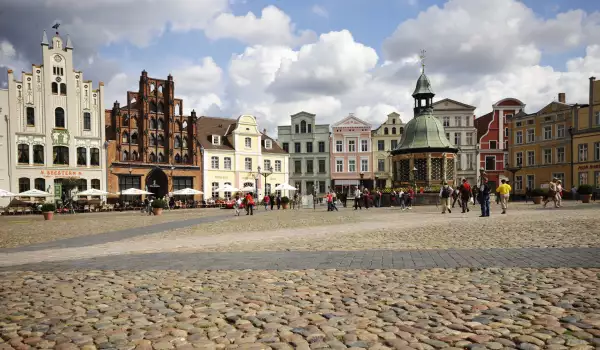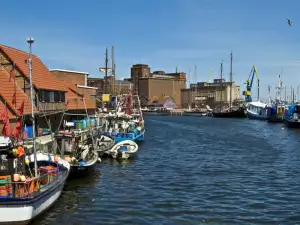Wismar

Wismar is a beautiful coastal city in Germany. It is located in the north, in the province of Mecklenburg-Vorpommern, like a small port on the Baltic Sea. The history of Wismar keeps evidence that in the 14th and 15th century this city was one of the most powerful and important centers of the Hanseatic Trading League. In Wismar today you can see a lot of historical and cultural monuments that keep the national spirit of the city. Wismar is located about 45 km from Lübeck and approximately 30 km north of Schwerin.
The first written mention of Wismar dates from 1229 when it was named a city. In 1259 Wismar entered into an agreement with the cities of Lubeck and Rostock, which joined forces to provide protection against numerous pirates of the Baltic Sea. It was this pact between the three cities that later developed into the Hanseatic League. During the 13th and 14th century, Wismar is a thriving member of the Hanseatic League, as the city developed and operated several large factories. Trade and economic sucess of Wismar is maintained until the 16th century. Under the peace deal in Westphalia, in 1648 Wismar passed to Sweden.
Swedish influence is preserved in the northern German city for the next 200 years. It ended in 1903 and in that considerable time Swedish culture has managed to leave its mark to a large extent on the architecture of Wismar. Traces of Swedish control today can be detected almost at every corner of the historic town of Wismar. For those 200 years, most of the brick buildings of the time of the Hanseatic League disappear at the expense of Swedish architectural pediment.

Today, the tourist flow in Wismar is directed mainly towards the old city center, which is part of UNESCO's cultural attractions. There are four main historical buildings that are now waking the guests of the city up, certainly among them stands the elevated red brick building of the Church of St. Nicholas. This beautiful and impressive historical and architectural masterpiece is one of the largest churches in Europe. This Christian church was built between 1381 and 1460 and together with the church Marienkirche are good examples of the influence of the great St. Mary's in Lübeck.
Built in the first half of the 13th century Marienkirche is the best surviving example of typical brick construction in the late Middle Ages. Its height reaches an impressive 80 meters. During World War II all Wismar with its beautiful buildings, such as Marienkirche were practically destroyed and what remained of the church was deliberately razed in 1960 by the East German communist government.
The historic Centre of Wismar with its brick buildings is listed as a World Heritage Site by UNESCO in 2002. The old part of Wismar consists mainly of a huge market square (Market Place), which is the largest of its kind in Germany, with its 10 000 square meter area. Around this beautiful square are beautifully arranged dominant architectural masterpieces of 14th-century north German Gothic style and the current in the 19th century Renaissance architecture.






